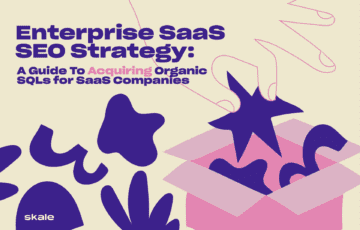
Enterprise SaaS SEO Strategy: A Guide to Acquiring Organic SQLs for SaaS Companies
Unlock the power of Enterprise SaaS SEO with tried-and-tested strategies from the experts & explore SEO tactics for SaaS enterprises.

This isn’t just any old SEO KPI article. We’ve not looked around and compiled a list of KPIs that hundreds of others have produced before.
We decided to go straight to the source and speak to SEO experts about what they believe are the most important SEO KPIs.
These SEO experts come from various backgrounds, but they all have one thing in common—they’re all part of the impact-driven SEO management team at Skale.
Together, they’ve picked their top KPIs for SaaS SEO that you can implement in your SaaS.
Digital products often rely on a digital-only approach to marketing efforts. This can make both selling the software and building trust in the brand trickier than with tangible products. SaaS SEO can help with both of these challenges.
There are a number of ways that SEO can help SaaS companies achieve their business goals:
When it comes to SaaS SEO, one of your main drivers should be revenue. That’s the bottom line— you want your SEO strategy to be supporting long-term financial growth. In fact, all our experts agreed that tracking and increasing revenue should be a priority for SaaS companies.
Things become a little tricky when we start to consider attribution— where an increase of revenue comes from. It can often be difficult to track this back to the original source, as highlighted by Ryan Prior— SEO Growth Strategist at Skale:
“You could sign up for a freemium product and use it for a year before you upgrade. The attribution is completely lost by that point.”
The same goes for a long sales process— the revenue is difficult to track and attribute. Difficult, but not impossible. Ryan explains more:
“Usually you’ll have some sort of primary conversion metric that indicates that revenue is on the way and you’re doing the right things.”
Let’s take a deeper look into conversions.

Measure the ROI of your SEO efforts
Practical methods for accurately measuring the ROI of your SEO strategy + free ROI tracker
Learn About SEO ROIConversions are another important SaaS SEO KPI for measuring the success of your SEO efforts. Here are Ryan’s thoughts on how it relates to revenue:
“You’d have a primary goal, like an increase in organic free trials. Some SaaS companies could take this further and use a PQL— so, for example, someone who’s done something within the product.
For sales-led businesses, this could look like a marketing qualified lead (MQL) or sales qualified lead (SQL), and it can take various forms depending on your goals and SaaS business model.“
By defining your conversion metrics you can gain insights into how organic traffic is contributing to revenue.
Unlike revenue, an increase in organic traffic can be directly attributed to your SEO strategy. It’s important to understand your current organic traffic before you begin focusing on SEO, we recommend taking an average of the previous six months to benchmark against.
You can do this in Google Analytics.
Your conversion goals may look something like this:
Once you’ve established your goals and benchmarks, you’re in a stronger position to report on any SEO-driven conversions.
Ryan also mentions the importance of search engine result pages rankings when it comes to measuring the success of an SEO strategy. The goal of SEO is to increase organic traffic to your website, and the success of your keyword strategy plays a big role in this. Ryan explains:
“Revenue is the ultimate goal, but rankings are a good indicator that what you’re doing is working. For example, if you got from #100 to #12, that’s a pretty good sign that what you’re doing is on the right track.
It’s very unlikely there will be any conversions to show for that, so rankings are kind of an early indicator of getting conversions and revenue further down the line.”
When it comes to matching keyword ranking with conversion rates, consider the search intent behind each keyword. For example, an informational keyword is going to garner a much lower conversion rate than a commercial keyword. Distinguishing between the types of searches is an essential step in your keyword research, and revisiting that may help you reach your target audience at the right time.
Tracking keyword rankings and their associated conversion rates is a key SaaS SEO metric, however, it’s also important to consider whether these keywords are branded or non-branded.
Organic traffic can come from branded and non-branded searches. Branded searches come from people who already know your brand— they’re trying to find you specifically.
Non-branded searches are often where many want to be focusing. These are people that find your pages through querying a specific topic or keyword. An increase in non-branded search traffic demonstrates a successful approach to SaaS SEO.
It can mean an increase in brand awareness and help identify your best-performing or most valuable pages. You can then use this information to analyze your pages and identify any that aren’t performing as you’d hope. It’s a strategic approach to SEO that leads us to…
The organic traffic you receive to each of your individual pieces of content helps identify what you’re doing right and what you’re doing wrong. For more on this, we spoke to Jordi Cubiró, SEO Growth Strategist at Skale:
“Classifying our traffic by content types helps us identify which areas of the website are underperforming and also where we should allocate more resources.
For example, we might be focusing too much on creating ToFU articles for the blog when what we are missing is traffic in our BoFU pages. Defining and attributing our organic traffic to different kinds of content helps to understand the ‘Organic Acquisition Model’.”
The organic acquisition model that Jordi mentions refers to the way in which SaaS businesses track how their organic efforts attract, convert, and close business opportunities. A comprehensive understanding of the journey your leads take in order to become leads helps you improve the process and meet prospective clients halfway, or at the bottom of the funnel instead. Essentially, you’re meeting people when they’re more likely to buy your product.
In order for SEO to be sustainable, you need to be able to measure and analyze the return on investment of your efforts. This includes technical SEO, on-page SEO, and off-page SEO.
Italo Viale, co-founder at Skale, highlights ROI from organic as one of the top three SEO metrics for measuring SaaS SEO success. Here are some questions he recommends considering in order to do this:
These are all key metrics for understanding how SEO performance impacts your overall business success. Again, you must identify the conversion metric you’re going to consider in order to accurately attribute these ROI metrics to SEO.
For details on how to calculate these metrics, check out our articles on 11 Crucial SaaS Marketing Metrics You Need to Track.
Link building is a key part of SaaS SEO, and search engine optimization in general. It’s something many SaaS businesses go for and build themselves or with an agency— like us! Backlinks not only boost your domain authority by acting as a vote of confidence for Google but also indicate the success of your SEO-driven content marketing strategy and brand trust. Check out why it’s beneficial to outsource link building strategy.
A strong organic link profile helps boost your organic search rankings and bring more users to your pages. When it comes to analyzing your SaaS link profile and categorizing all your backlinks, Martín Durán recommends a number of tools. He highlights:
“Google Data Studio provides the most pristine source of clicks. However, there are more sophisticated solutions like Segment that allow you to track customer data and events more efficiently and accurately.”
NB: Martín also makes a point to distinguish between leading and lagging SEO metrics. Leading metrics are KPIs that change before a SaaS business begins tracking a particular pattern or trend. Lagging metrics are KPIs that record the actual performance of an organization— in this case the organization’s SEO performance.
Alongside the other SaaS SEO metrics, keeping an eye on backlink performance provides key insights into the success of your SEO strategy.
Bounce rate is great for measuring:
If people land on your page and don’t stay on it, they’ve not found what they’re looking for. This could either be because your content isn’t of high enough quality or it could be because it’s not answering their search query quickly enough.
Ranking highly for the wrong keywords will hinder your domain authority, not help it. Search engines prioritize search intent as one of the key factors behind the search results it shows to each individual searcher. The different keywords you target with your SEO-driven content marketing need to match up with the search intent behind the searches that use these keywords.
You can use Google Analytics to measure the bounce rate of your pages and identify any areas that require improvement or reconsideration.
Monthly recurring revenue from organic reflects the number of paid subscriptions obtained through SEO marketing efforts. It gives you an idea of if your SEO efforts are bringing new customers to your brand. We spoke to Jordi for more on this:
“Attributing subscriptions to different landing pages is very helpful to assess which content clusters are bringing in most of our ‘valuable users’. It helps understand which are the main sources of paying customers and helps create a strategy that prioritizes those pages.”
Understanding your MRR and where it comes from can help your SEO team improve their efforts and push focus on what’s the most successful approach. Italo added:
“SaaS businesses need to impact the bottom line, and usually, it’s not a volume game but a strategic game where 20% of the pages can bring 80% of performance growth. “
Click-through rate helps determine different things depending on where you’re considering it. When looking at your CTR on search engine results pages, it points towards the strength of your brand domain, and the effectiveness of your metadata.
If you’ve successfully attracted organic traffic to your website — a landing page, let’s say — you want to understand how people are using the page and where they’re clicking. This helps determine the performance of your on-page SEO and the relevance of your target keywords. In turn, this helps you understand:
There’s little point in wasting time targeting keywords when your solution isn’t what people are looking for with their searches.
You can analyze the CTR of your pages and queries in Google Search Console under the performance report.
The last SEO metric on our list is crawl errors. This highlights any coverage issues your page is having and allows you to fix them. In order for Google to rank your pages and acknowledge your SEO efforts, crawlers need to be able to successfully index your pages. If they’re unable to do this, your SEO tactics on those pages will be for nothing.
Whilst this isn’t necessarily a KPI in nature, it can definitely help when aiming to understand why your SEO efforts aren’t working as planned. It can also point to wider issues that — if not addressed — can be hugely detrimental to your online presence and domain authority.
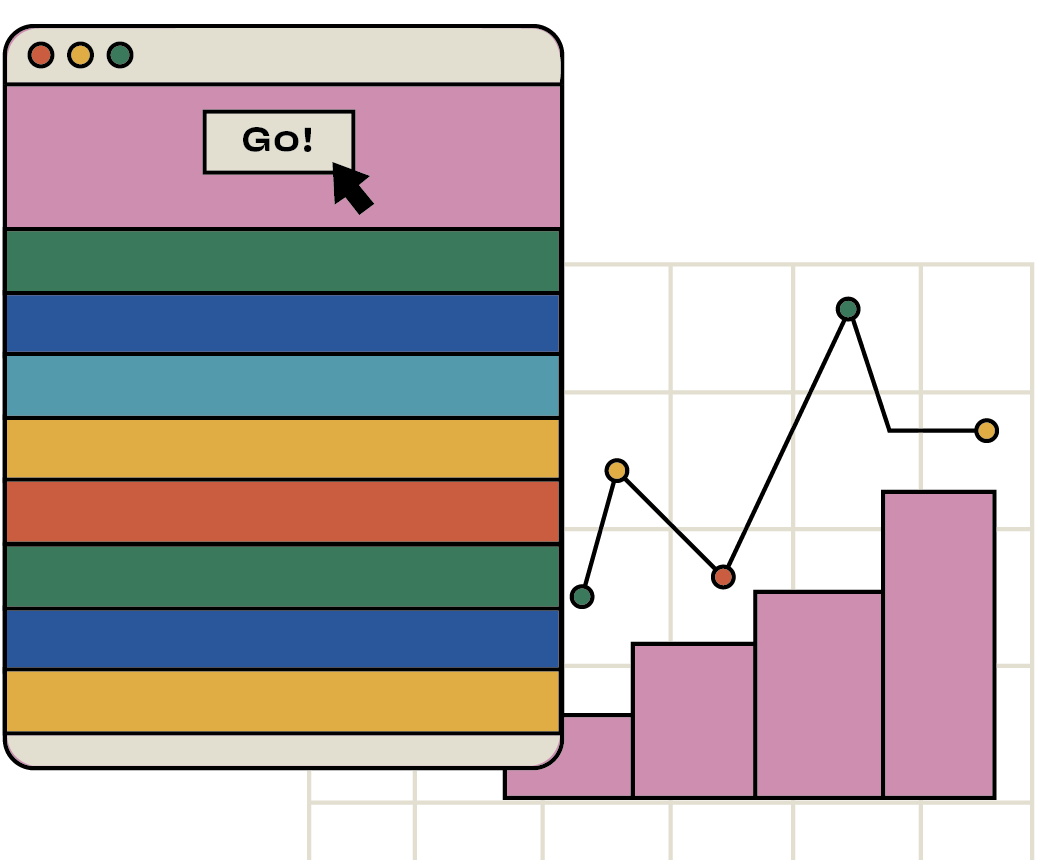
Effectively measure your SEO ROI today
Download your free ROI tracker and better support your SaaS SEO strategy
Download Free ROI TrackerAfter picking the Skale team’s brains for the most important SEO KPIs, we spoke to the SEO experts about their dream team when it comes to tools. They all mentioned the following:
Your ideal tool depends on what you’re looking to do. Ideally, you want a tool that’s:
There are ample free SEO tools available, with many of the best platforms offering cheap — if not free — trials of their product. For a more in-depth analysis of the SEO tools you should consider, take a look at 15 Secret SaaS SEO Tools That The Pros Use To Outrank The Competition.
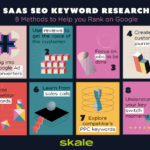
The SEO KPIs that SaaS companies use are:
1. Revenue
2. Conversions
3. Keyword SERP Rankings
4. Non-branded vs branded
5. Organic traffic
6. ROI from organic
7. Backlinks
8. Bounce rate
9. MRR from organic
10. Organic CTR
11. Crawl errors
For more information on how SaaS businesses use SEO, check out Skale’s SaaS SEO handbook.
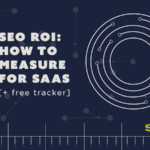
There are a number of metrics that you can analyze to measure the ROI of SEO for SaaS, such as:
– Monthly recurring revenue
– Customer acquisition cost
– Customer lifetime value
For an in-depth view of how to calculate SaaS ROI, check out this article.
Learn more about
SaaS SEO

Enterprise SaaS SEO Strategy: A Guide to Acquiring Organic SQLs for SaaS Companies
Unlock the power of Enterprise SaaS SEO with tried-and-tested strategies from the experts & explore SEO tactics for SaaS enterprises.
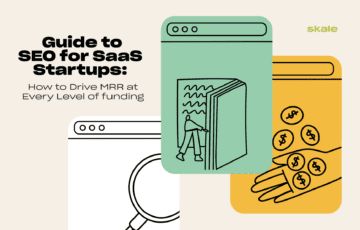
Guide to SEO for SaaS Startups: How to Drive MRR at Every Level of Funding
Discover how to drive MRR with SEO for SaaS startups, and how your B2B SEO strategy should evolve for different levels of business funding.

SaaS SEO Guide: Create a Data-Driven Strategy for Explosive Growth in 2024
We've transformed SEO to be a top-performing customer acquisition channel for so many SaaS, and there's no stopping you from doing the same.